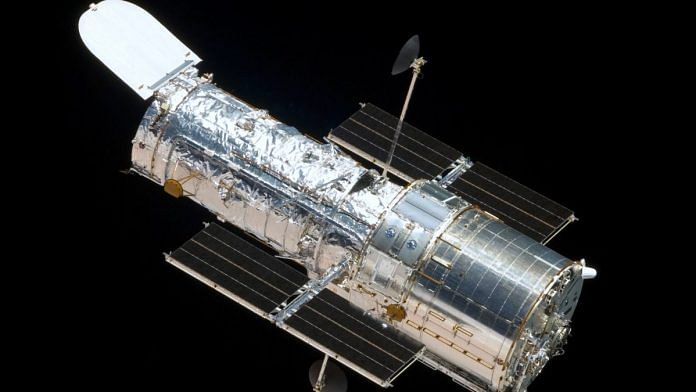Reporting science has become more mainstream in media around the world and India is also catching up quickly. But latest scientific research is published in a variety of journals, making it hard for readers to keep track. What’s harder is understanding the crux of a scientific finding with the relevant context and without misinterpretation. We at ThePrint focus on covering science news in India, but want our readers to be updated on the latest global findings as well.
ScientiFix, our weekly feature, will offer you a summary of the top global science stories of the week, with links to the best sources to read them. It’s your fix to stay on top of the latest in science.
Two NASA space telescopes go offline
In completely unrelated events, two NASA space telescopes — the Hubble Space Observatory and the Chandra X-ray Observatory — went offline within one week. Hubble went into safe mode when the third of its six gyroscopes experienced a mechanical malfunction and a back-up failed to kick in. Kepler, yet another space telescope, has been in safe mode since September. The Washington Post has the details. Chandra also experienced a gyroscope failure and shut its X-ray eyes. Read the full story on Extreme Tech.
A major scare for ISS astronauts
A Russian Soyuz rocket experienced a failure as it launched US astronaut Nick Hague and Russian cosmonaut Alexey Ovchinin towards the International Space Station Thursday. Instead of exiting the atmosphere safely, for the first time in 20 years, a crewed rocket failed and catapulted its passengers back to earth. The duo experienced whopping 9Gs on their violent re-entry through layers of atmosphere, and landed safely in Kazakhstan, although the rocket disintegrated. Currently, there are three astronauts aboard the ISS, but Russia has now grounded the Soyuz, which means crew launches are not going to happen soon. Find more on Gizmodo.
Also read: This is how plants communicate danger, and it’s trippy
Same-sex mice parents give birth through gene-editing
Chinese researchers have managed to get two pairs of same-sex mice to give birth. Using CRISPR–Cas9 gene-editing, the scientists were able to get two female mice as well as two male mice have offspring. However, the male mice’s pups died shortly after birth. The scientists claim that if hurdles are overcome and the process proves to be sustainable in large mammals, their breakthrough could offer a solution to human same-sex couples. Scientific American has more.
New high-resolution microscope traces progress of mouse embryo
Researchers have developed a new microscope that is powerful enough to capture the growth of an embryo, tracking and mapping the development of organs in real time. This microscope is expected to find utility in understanding human embryonic development and birth defects. The process has been caught on video as well, showing the development of a mouse’s heart. Read more on The New York Times.
New UN climate change report predicts alarming global effects by 2040
The United Nations scientific panel on climate change issued a worrying report Monday about the dangerous effects of rapid climate change that they weren’t previously aware of. The report states that acute food shortage, wildfires, and mass coral bleaching are all theoretically probable in the next 20 years, with damages totalling $54 trillion. Read The New York Times report here.




Off late both russian and united states faces failure in spacemissions. May be they have started space war and are attacking each other with laser weapons.